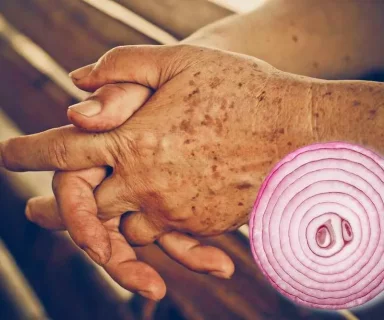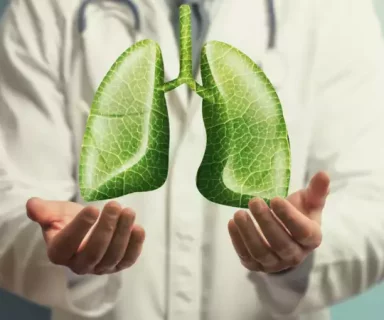Advertisements
Paris is renowned for its quaint and picturesque canals, which have become a tourist attraction in their own right. However, as a result of years of pollution most of these Canals are in fact filthy and steaming.
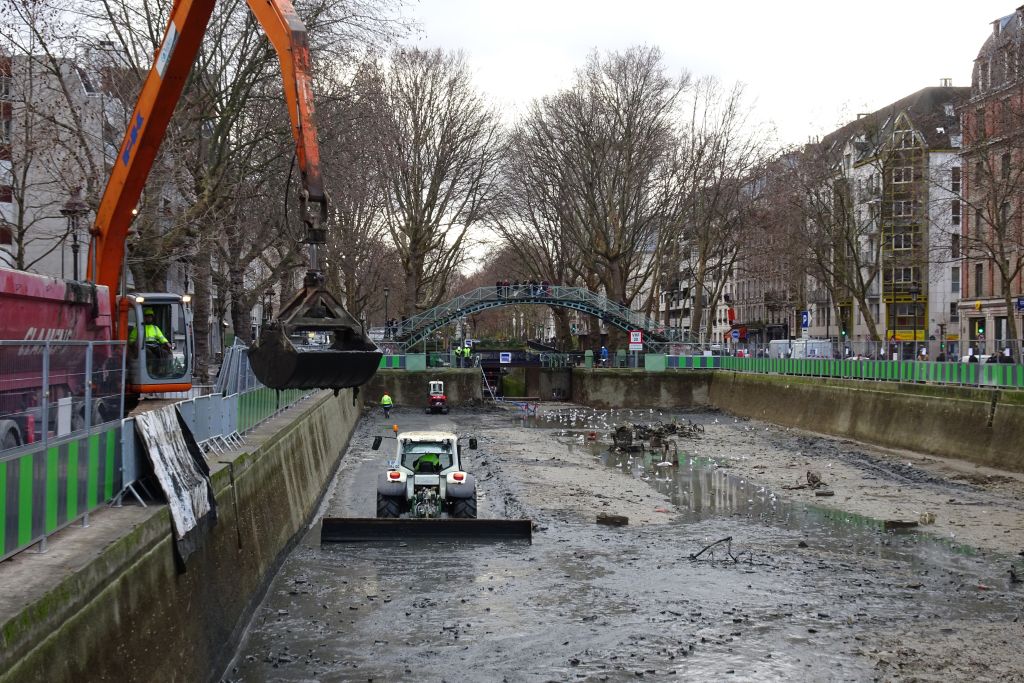
Parisian authorities are gradually working on the transformation of these dirty bodies of water into the clean oasis that they should be. They began their work on The Saint-Martin Canal, which hasn’t been cleaned for 15 years.
1. Before
This is what the canal looked like before it’s clean-up. At first glance, nothing looks too out of the ordinary. The canal is lined with trees on both sides, sheltering it from the hustle and bustle of the city and making it a quaint spot for an evening stroll.
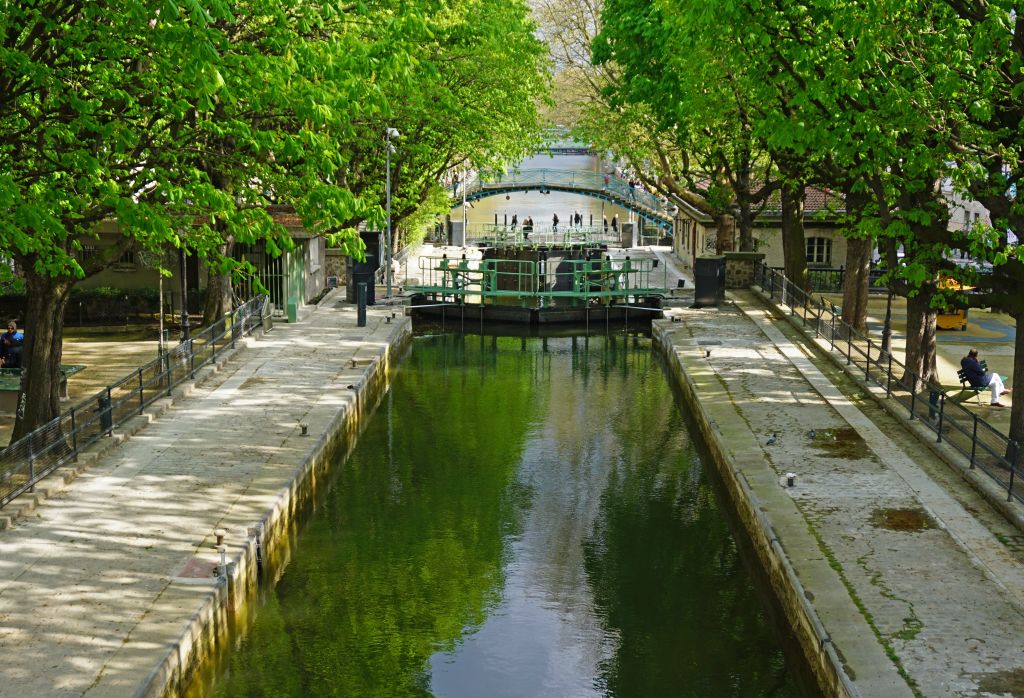
However, underneath the smooth surface of the water, lie some bizarre items. While many of these items are simple everyday objects, others have more sinister histories. Scroll down below to find out what exactly was hiding in the mysterious canal.
2. It Begins
Before they could begin the drainage and cleaning, the workers needed to create a temporary dam in order to section off the area. The beauty and tranquillity of the canal was instantly disturbed by the industrial sound of heavy machinery and the unattractive sight of the cranes.
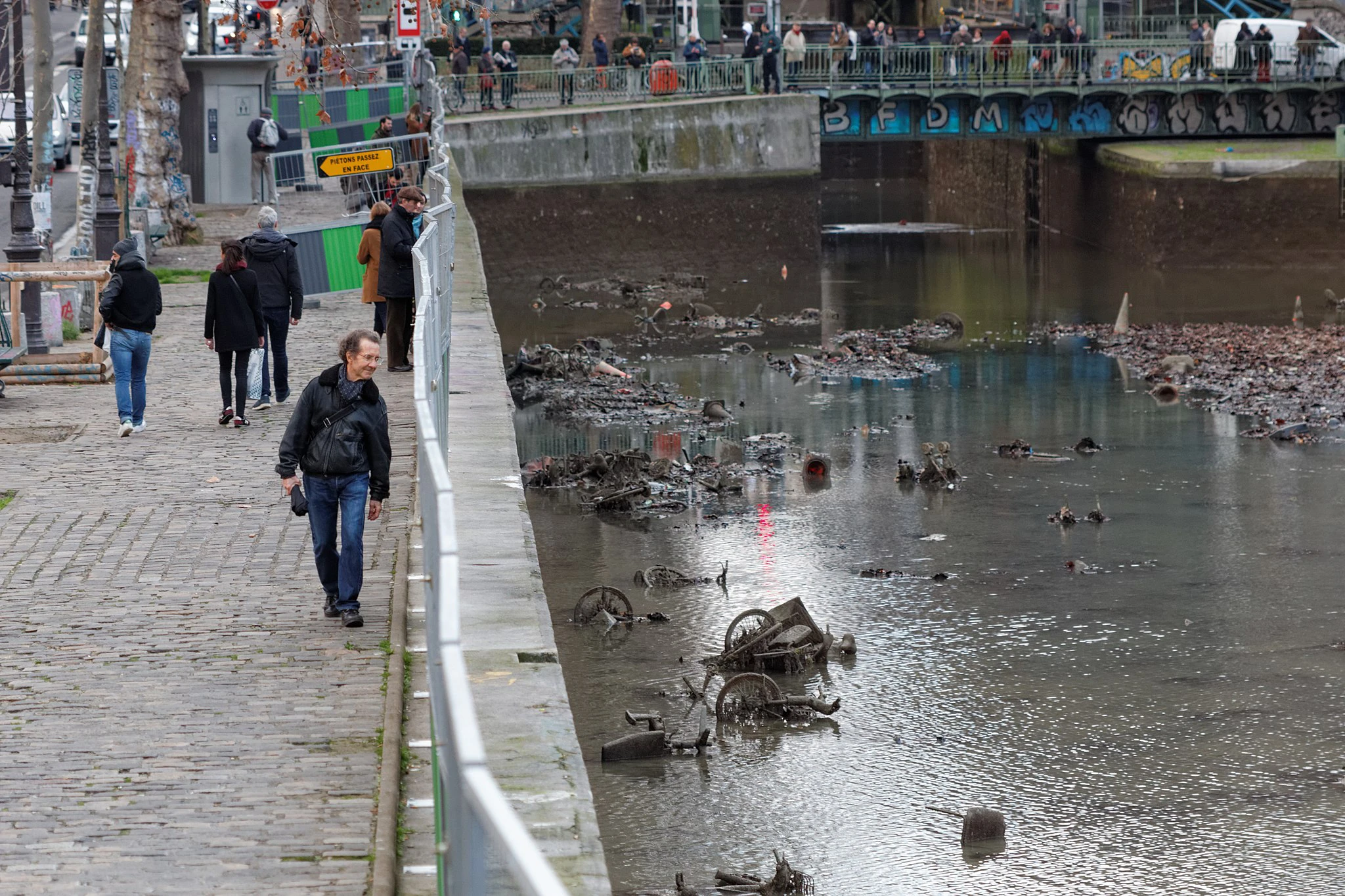
Some of the passers-by were probably mumbling to themselves, “I’m big enough to lift this”. However, the size of the slabs suggests that we can all safely say that they were not quite up to the task, contrary to their own beliefs.
3. Drainage
Once the water had been filtered through the impromptu dam, slowly the drainage process began. Workers ensured that not all of the water was completely drained away, leaving some of the water for a very specific and thoughtful reason.
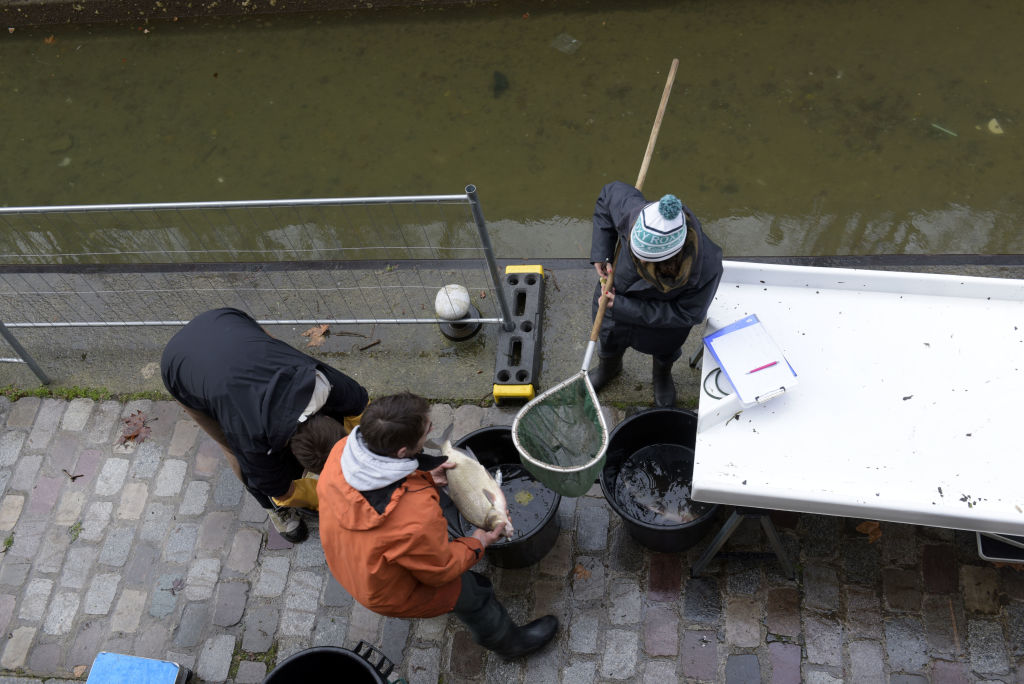
The Parisian waters certainly contained some brave fish. The workers had to go into the canal and take care of the aquatic wildlife, residing in the murky waters. No need for advanced technology here, since they went with the old-fashioned way of grabbing them by hand with some long nets.
4. Transporting the fish to safety
During canal clean-ups, it is common to have to transport some rare species of aquatic wildlife to safety, but during this particular clean-up, there was an exceedingly large variety that needed to be transported elsewhere.
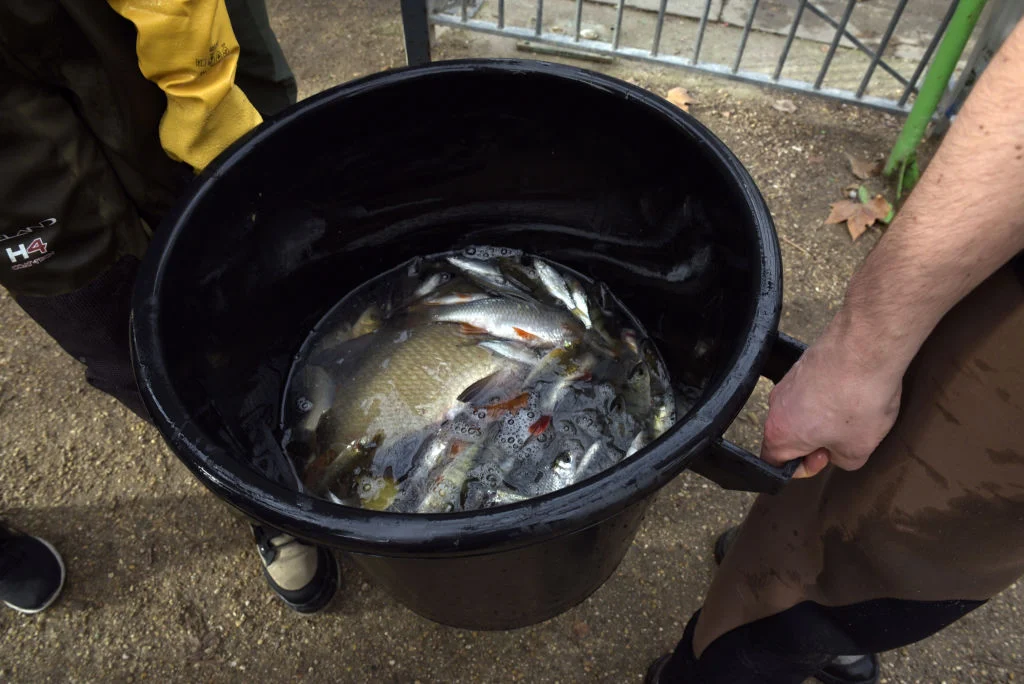
In fact, more than 4.5 tonnes of live fish were gathered from the murky waters of the canal and relocated to another environment. The different species are sorted, counted and released once a health analysis has been carried out.
5. Gathering Evidence
During the transportation process, the fish were counted and researchers used their general health and weight readings as a way to gauge the overall water quality in the Paris canals.
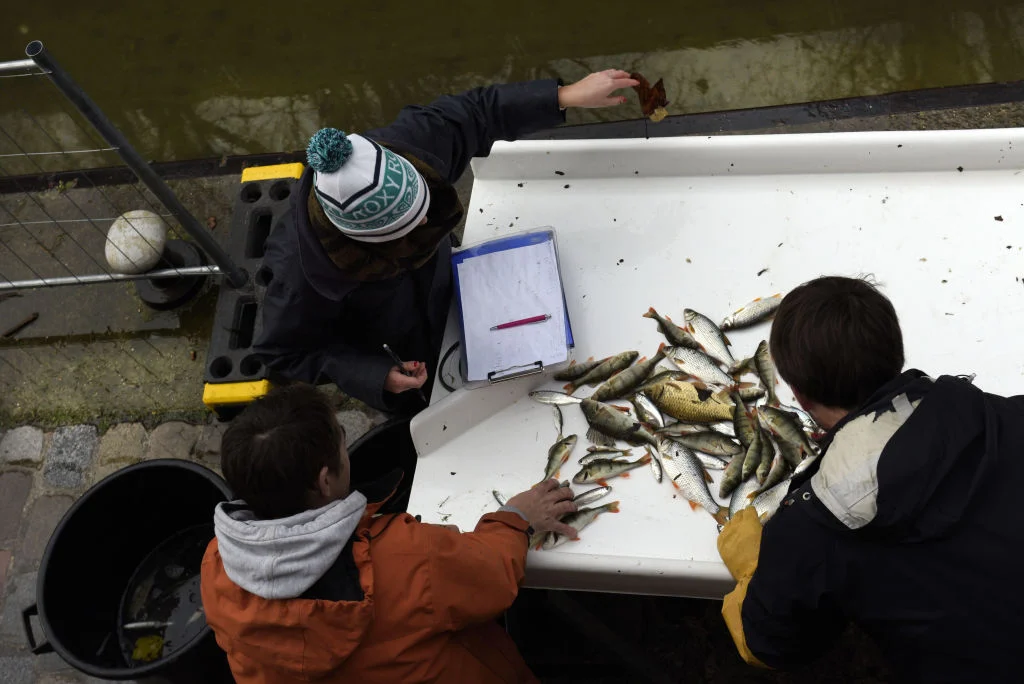
These figures are used, not only by marine biologists to help aquatic wildlife, but also to provide them with an insight into their lives. Fun Fact: The workers found a carp weighing more than 20 kilograms in the Paris Canal!
6. Deep Discoveries
With the fish relocated to a safe place, the cleaning process finally begins. While seasoned workers are well aware of all the creepy and mysterious things one might find at the bottom of the canal, nothing had prepared them for this discovery…
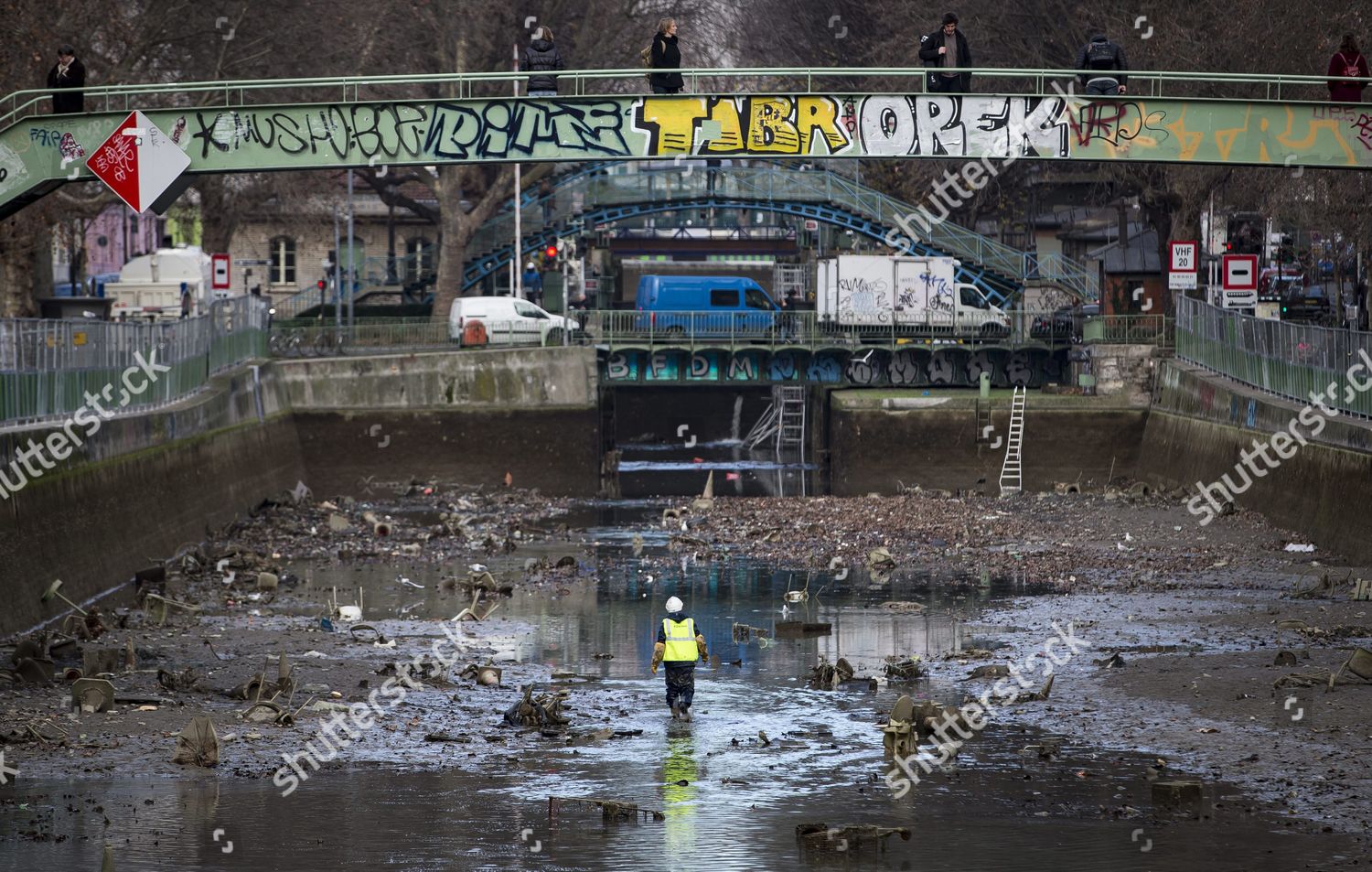
Remember that this Canal hadn’t been cleaned for several years. It had been witness to Paris both at its worst and at its best! Draining it revealed some secrets that it had been hiding for quite some time and stunned everyone!
7. A Wild Traffic Cone
A real classic. This cone, once used to divert traffic, was discovered sunken at the bottom of the canal. While this is one of the more common objects found in the canal, it is still peculiar.
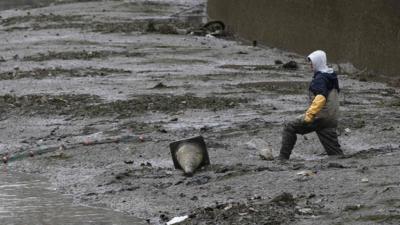
We do question how it is that a traffic cone ends up in a Parisian canal… Perhaps they get carried away by aggressive winds, or perhaps it is the work of Parisian youths, returning home from a night out and looking to cause trouble.
8. An Abandoned Trolley
Amongst the mud and moss, the maintenance team discovered this shopping trolley in the Paris Canal. It seems to have been there for a long time. Each picture begs the question, what is this objects history? and.. how did it end up here?
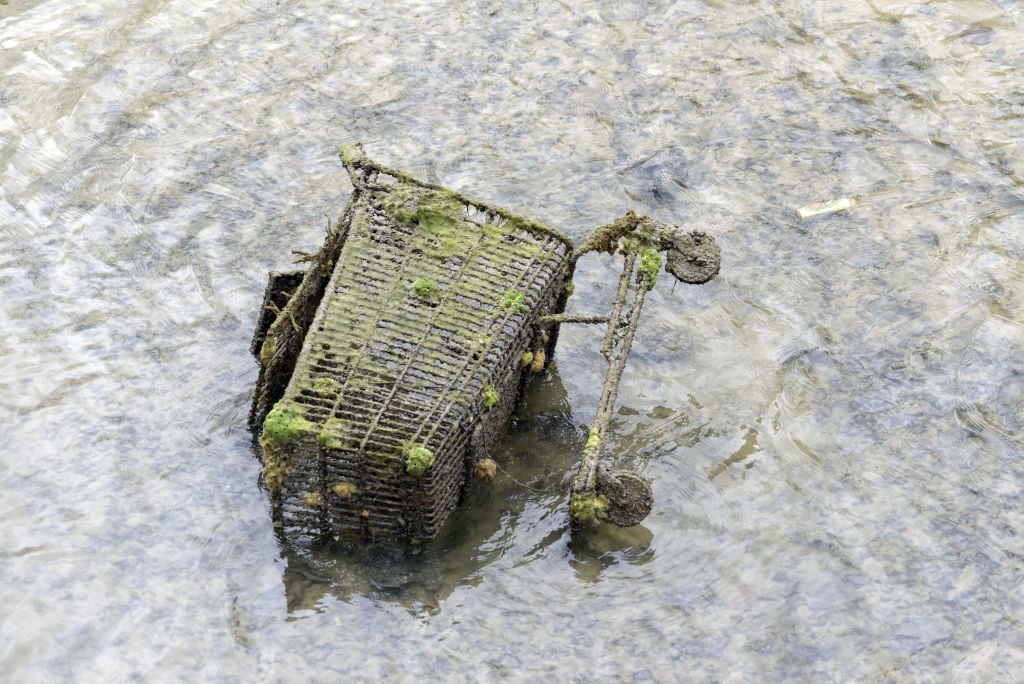
Our guess is that this could be the work of a bunch of teenagers messing around with a stolen cart or perhaps it belonged to a homeless person. Either way, with no major department stores in the vicinity, it is clear that this was no accident.
9. An Office Chair
We can assume that most of the items that end up in the canal are chucked in there by lazy individuals who do this to avoid having to dispose of their old furniture in the appropriate manner. This picture shows an old office chair, in relatively good condition.
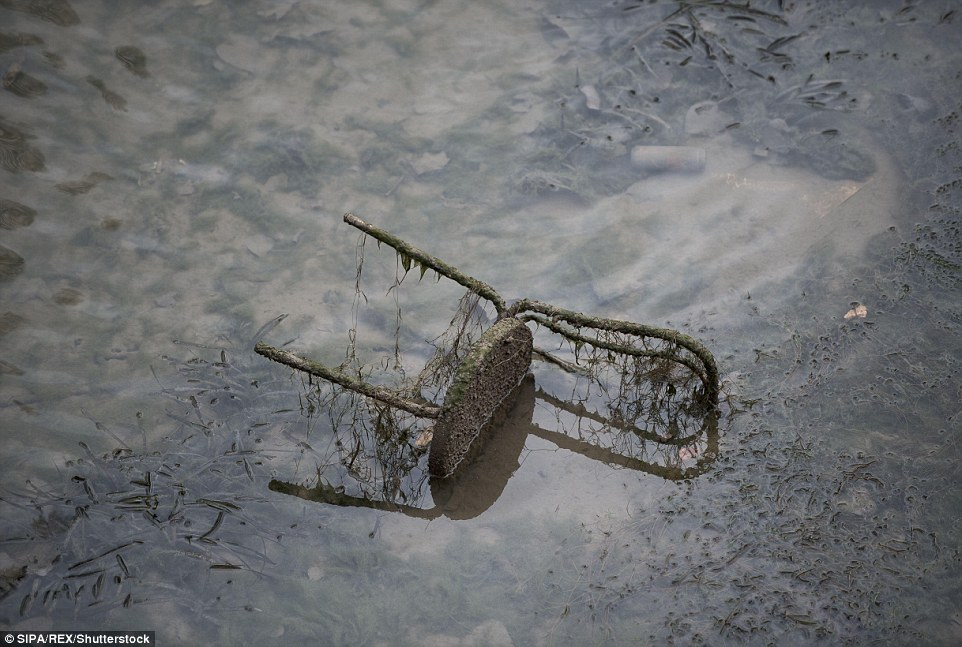
The lack of concern these people seem to have for the aquatic wildlife living in these canals is really quite shocking. Throwing these kinds of items into the canal poses a significant risk to both the environment, and to the lives of the wildlife.
10. Bicycles…
What to do with your Vélib when there is no more space on the terminals at the bottom of your road? Perhaps head to the nearest neighbourhood to find one? This person thought it better to just throw their bike into the canal.
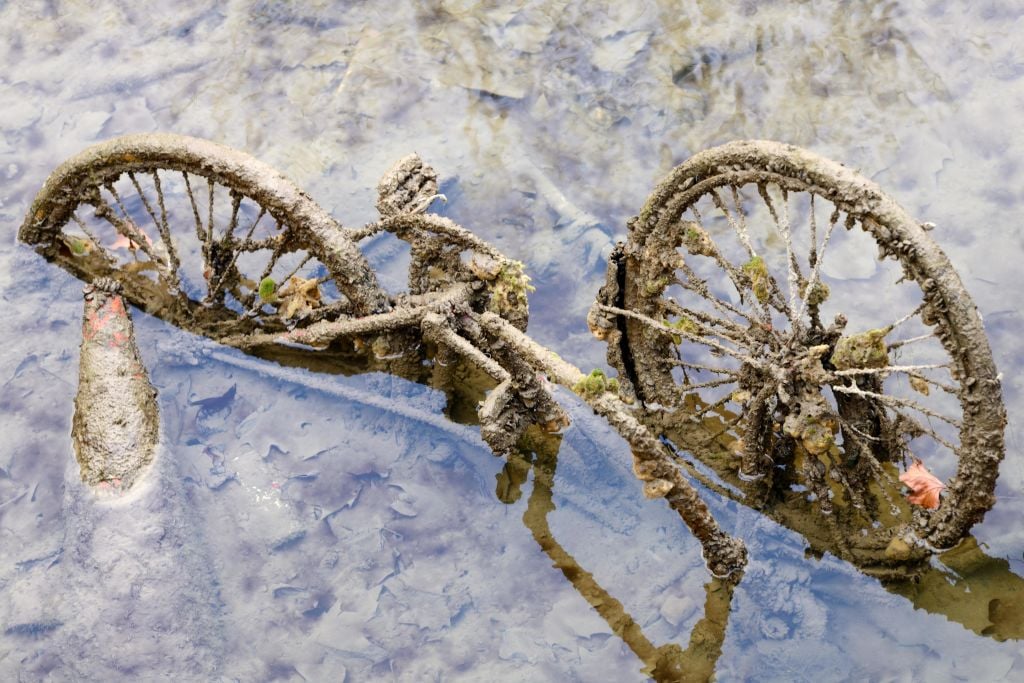
The water managed to do some serious damage to this bicycle but strangely enough, the contents of its front basket, still remain intact. While no one has bothered to take a closer look at them.. we are curious to know more!
11. Deux Vélos
It is quite shocking to find out how many bicycles have actually been found in the Paris Canal! Do you want to guess the exact number? It’s not one, two or twenty! In fact, believe it or not, its in the hundreds.
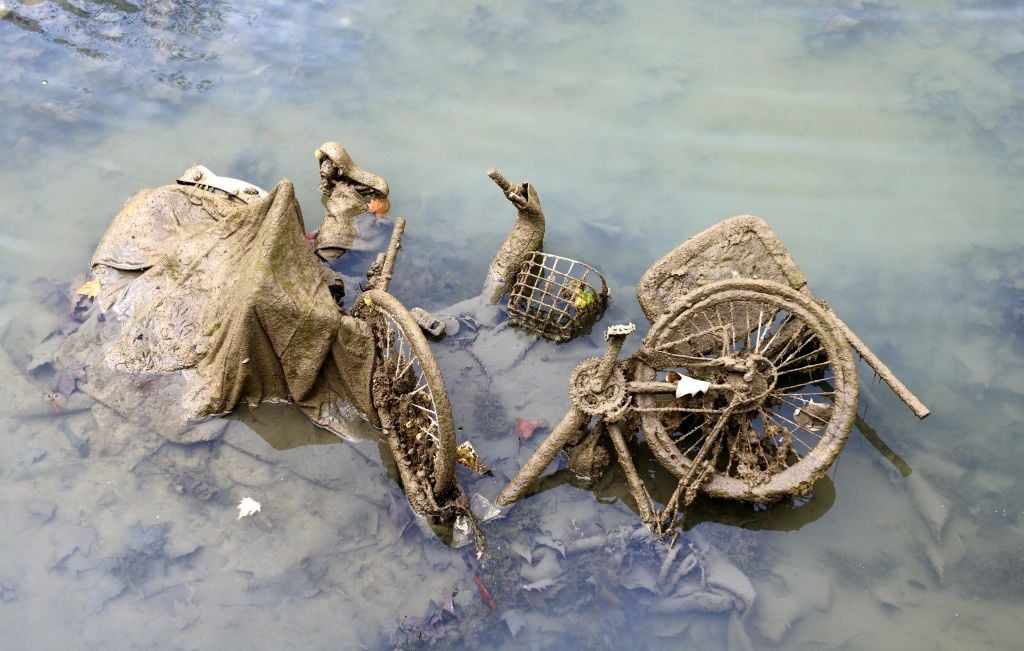
The majority of the bikes were actually found in the same geographical area, namely the 5th and 6th arrondissements of Paris. Looks like some people don’t quite understand that you can’t cycle on water…
12. … And Still More Bicycles…
The most shocking thing is the quantity of these self-service bicycles that we found in the river. About one hundred Vélibs were recovered, to be more precise, exactly 98 models, impressive, right?
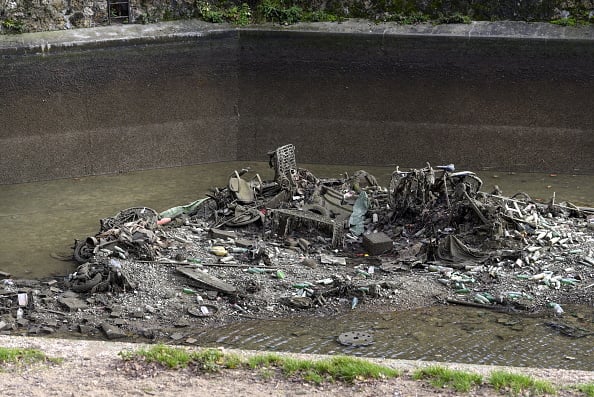
It wasn’t until we saw which objects followed the bike, that we were truly shocked. It was as if the entire neighbourhood had been using this picturesque canal as a dumping ground for all sorts of things.
13. Some Upside-Down Tables
It looks like this canal wasn’t just a nice place for a walk, but it also functions as a dustbin for local residents. In this picture, you can see several neglected tables resting at the bottom of the filthy canal.
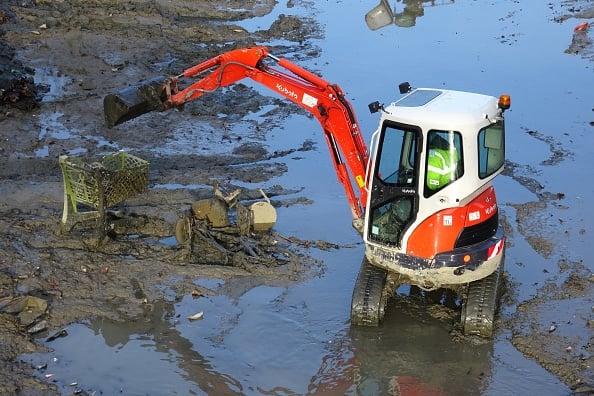
Seeing the amount of non-biodegradable waste really makes our blood boil. When will the world start to understand that their laziness is ruining entire ecosystems and causing major species to become extinct?
14. Anything and Everything
As far as we know, the damage done to the canal hasn’t actually caused the extinction of any species, but this level of thoughtlessness is causing some big issues. Here we have a mattress base, a chair and a shopping bag.
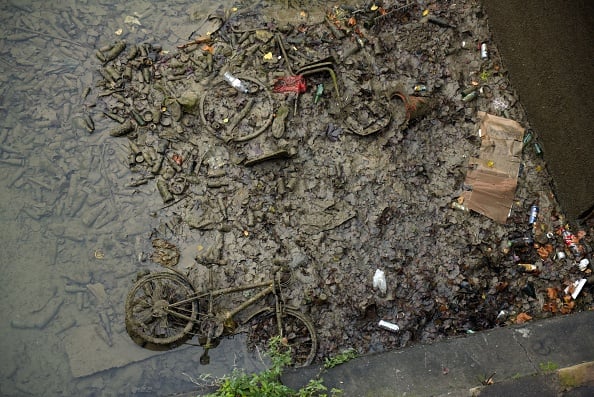
It seems that after damaging or breaking a piece of furniture, people do not try to repair it, or take it to the waste disposal centre, instead they walk it down to the nearest canal and “accidentally” drop it in.
15. A Trolley
The last item which falls into the “home objects” category, is a hand-held trolley. Half-submerged, its hard to properly make-out the item, but this is yet another object to add to the long-list of things which shouldn’t have been found in the canal.
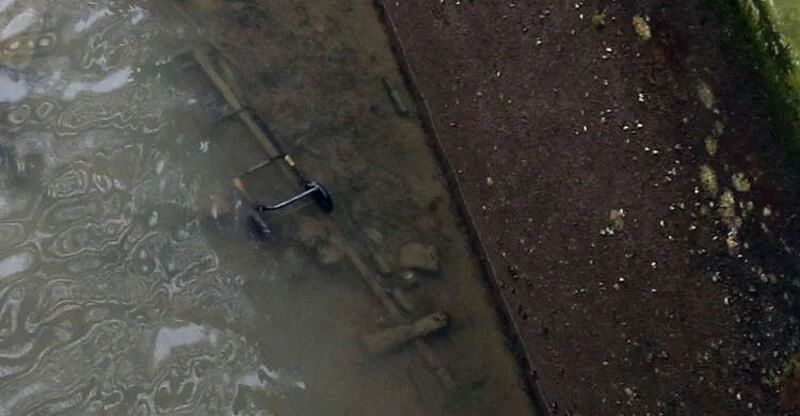
We imagine that the object that was meant to be transported somewhere, but never arrived at the desired destination. It may seem strange to find such objects in the canal, but this is nothing compared to what follows…
16. Scooters
After the hundreds of Vélibs, the workers thought they had seen it all, until they discovered the following. These two scooters looked to be in exceptionally good condition, considering the fact that they have been submerged in murky water for goodness knows how long.
We really question how these two ended up there but, above all, wonder how it is that they have not been damaged? Who would throw perfectly good looking scooters so that they end up at the bottom of the canal?
17. A Stack Of Bicycles
After one bike, two bikes, hundreds of bikes, we have moved on to a pile of bikes! This was a very strange sight that caused the workers to double-take. The mess shown below looks more like scraps of metal than old bikes.
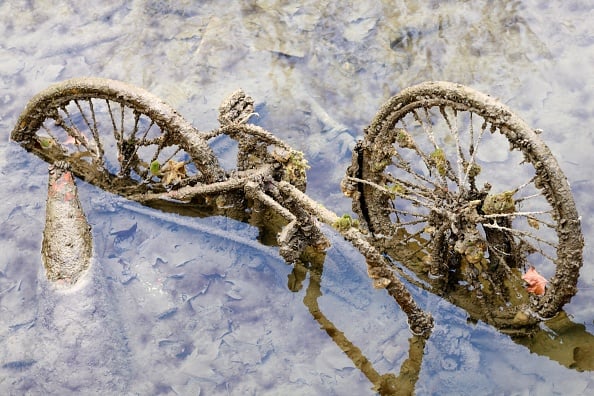
“It’s like some kind of weird underwater treasure… I can’t believe how many Vélibs are in there. I guess they were stolen and thrown away afterwards. It’s weird,” a local told The Guardian newspaper after the canal was cleaned up.
18. A Block Of… We Don’t Really Know
There is great mystery around the contents found hidden in the canal. Take this huge block of concrete, for example. It is such a peculiar piece and isn’t at all in keeping with the surrounding area.

In fact, on reflection, one wonders if it might not be a sample of the “Numerobis” stones that were thrown into the Nile under Amonbofis’ orders, this one may have just been lost on the way.
19. A Can Of Beer
Amongst all the rubbish, there was something which came as no surprise to anyone. A beer can. The only shocking thing here is that, despite having access to multiple garbage cans around the city, some people still choose to litter.

Thousands of small objects, like beer cans, are thrown into rivers, seas and oceans every day, polluting our environment and causing irreparable damage to aquatic sea life. When will people learn?
20. A Pile Of … Stuff!
The canal is located in one of the busiest areas of Paris and some idiots throw their plastic bottles in the water. Obviously, these people have no respect for nature. Well done, you morons!
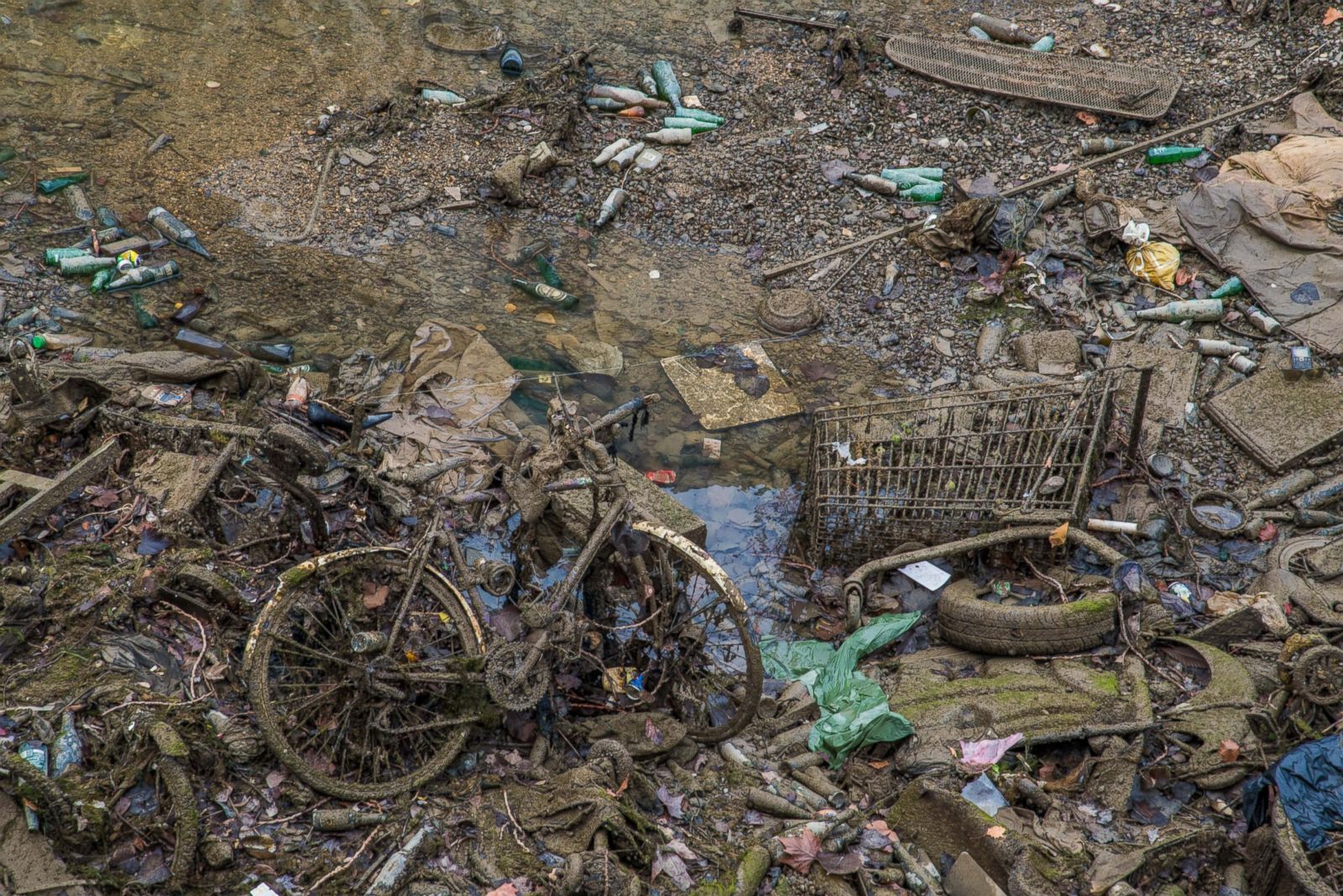
Here you can see the ghastly amount of old bottles and twisted metal cans found all jumbled up at the side of the canal. Imagine a poor fish getting trapped in this pile of junk, which could have easily been properly disposed of.
21. In Short, The Saint-Martin Canal Is A Museum Of Horror.
In this image, as in the others, we can clearly see that the Paris Canal is just like a horror museum or a rubbish dump. These pictures should be a wake-up call for anyone who is still carelessly littering and polluting the earth.
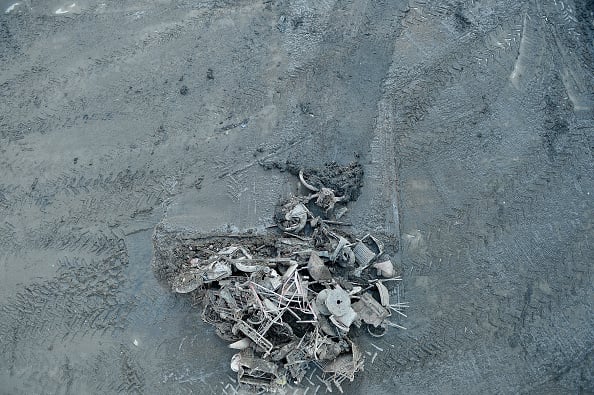
Does it really require less energy to throw all these objects over the bridges or at the edge of the docks than to just put them in a garbage can or a suitable place? What world do we want to leave for our children and future generations?
22. Moral Of The Story
We must stop throwing our waste into rivers and oceans, even if we do end up with some interesting and arty pictures at the end of it. Over the decades, this garbage will accumulate and the toxic chemicals they release will seep into the earth.
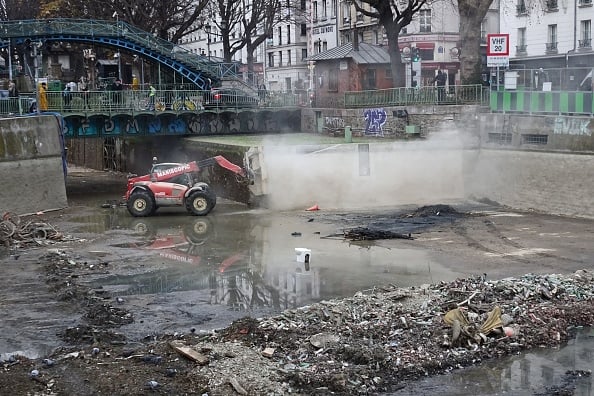
This toxicity, not only poisons the sealife, but can also have an effect on the trees surrounding the canal, who are dependant on the canal for water. This channel is just a minor example of a global phenomenon.
23. Be Clean!
If these pictures weren’t enough to make you change your ways, then these facts should: Water pollution kills more than a million seabirds, more than a hundred thousand marine mammals and costs billions in clean-up costs each year.
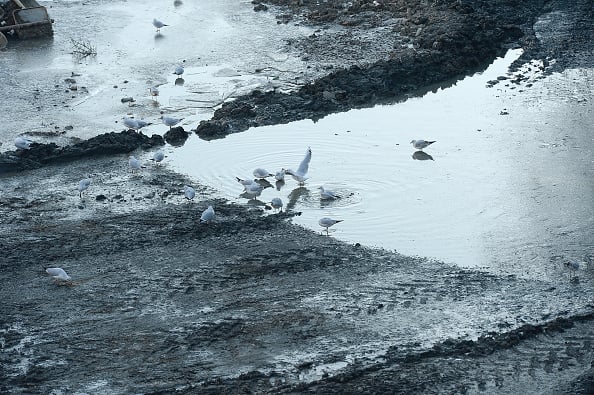
Yes, billions! All you need to do in order to prevent all of this, is to properly dispose of your waste. Thankfully, we live in a place where there are several ways to dispose of garbage, in a way which doesn’t negatively affect the environment, so be responsible!
24. Otherwise, Someone Will Have To Clean Up After You!
It’s important to remind yourself that marine pollution affects animals first, then the people who cause it. When plastic decomposes in water, it turns into plastic microparticles that are almost impossible to destroy…

Consequently, marine animals end up ingesting them without knowing it and, ultimately, die. These particles remain inside fish that are raised in order to end up on our plates, and, as a result, these particles pass easily through the tap and end up in our glasses without us noticing. Would you like to suffer the same fate as these marine animals?

